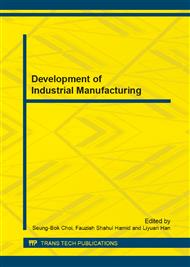p.15
p.23
p.31
p.35
p.40
p.45
p.53
p.58
p.62
Influence of Alloying Element on Corrosion Behavior of Hastelloy C-276 in Supercritical Water
Abstract:
The corrosion tests of Cr, Fe and Ni of Hastelloy C-276 were studied at high temperature and pressure with different aggressive components. The results were investigated by means of graphite furnace atomic absorption spectrophotometer (AAS). The Cr forms stable oxide and NiO is unstable. There is a synergistic effect between salt and oxygen leading to a severe loss of metals. The PO43- can improve the resistance to corrosion for Hastelloy C-276 due to the low-solubility phosphates. The colors of effluences can better support the changed concentrations of metals. The lost metals can reveal the corrosion mechanism of Ni-based alloys.
Info:
Periodical:
Pages:
40-44
Citation:
Online since:
February 2014
Authors:
Keywords:
Price:
Сopyright:
© 2014 Trans Tech Publications Ltd. All Rights Reserved
Share:
Citation:


